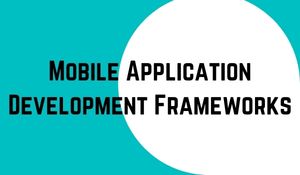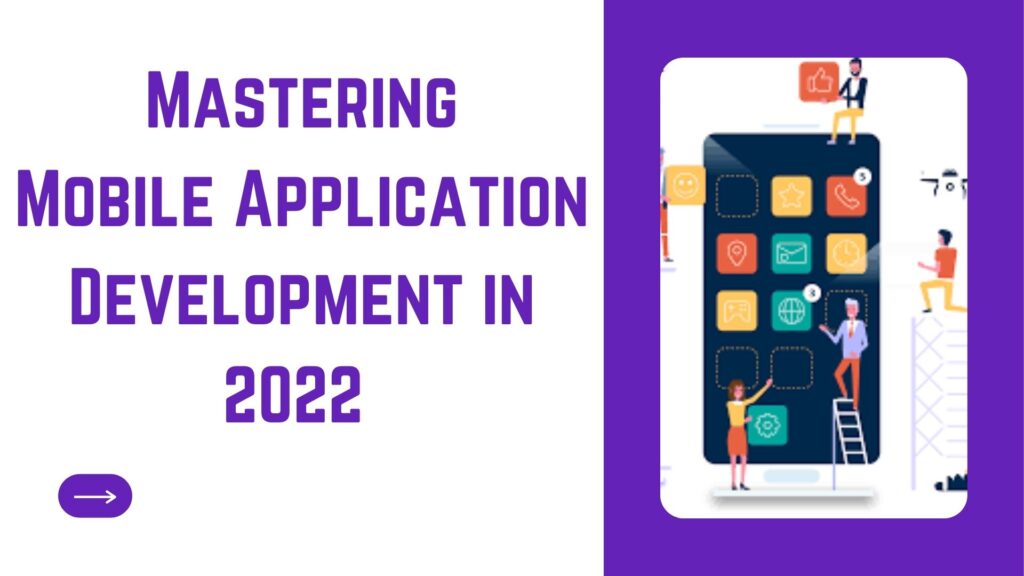
In the current mobile app development landscape, there are a number of popular frameworks that developers use to create their apps. Some of these frameworks are more suitable for certain types of apps than others, so it’s important to be aware of which ones are most versatile and powerful. In this blog post, we’ll take a look at the top 10 mobile app development frameworks in 2022 and see how they stack up against each other. Stay tuned!
The world of mobile app development is continuously evolving, with brand new technologies being released almost every other day. How do you keep up? GoLogica team has come up with a list of 10 frameworks that are powerful enough to take on the challenges of modern-day mobile app development.

1) The Ionic Framework
Ionic makes it easy for developers to build cross-platform applications that can run everywhere, from iOS and Android devices to Windows desktops.
Features of Ionic Framework:
– Easy to use front end UI components
– Access native device features (e.g., camera, video recording)
– Integrates web technologies (HTML, CSS, JavaScript)
– App development platform that can be used across many platforms
Official Website: https://ionicframework.com/
2) Apache Cordova
Apache Cordova is the most widely used framework for developing cross-platform mobile applications using HTML5. It uses web languages to build native applications without requiring the developer to learn the native language of each platform.
Features of Apache Cordova:
– Make calls to devise features like contacts or camera
– Allows access to devise hardware specs such as battery status
– Easy installation of these apps on app stores via plugins
Official Website: https://cordova.apache.org/
3) IOS Native Development Kit
Apple’s official iOS development kit (Xcode) is the most advanced programming environment available to build applications for iPhones and iPads.
Features of IOS Native Development Kit:
– Integrate with Apple services like iCloud, Airdrop, Family Sharing
– Use of latest technology like Address Book Authorisation
– Supports all Apple devices
Official Website: https://developer.apple.com/ios/
4) Flutter
Flutter is Google’s open-source framework that allows developers to create beautiful native apps that run on both Android and iOS platforms. It uses innovative rendering techniques that eliminate jitters on all screens regardless of their size or pixel density.
Features of Flutter:
– Bring your designs to life with Flutter’s visual tools
– Customise widgets for a more personalized feel of your app
– Material design on Android and iOS themed widgets
Official Website: https://flutter.dev/
5) Corona SDK:
It is an open-source and free-to-use application development framework used to allow the game applications created for mobile. This framework can be based on the Lua scripting language that is easy to use, lightweight, and flexible in developing game applications.
It is very popular for developing mobile game applications accessible on various platforms like Android, iOS, and Nook.
Features of Corona SDK:
– Cross-platform framework and Real-time simulation
– Live testing and Completely free
Official Website: https://coronalabs.com/
6) React Native
React Native is a framework by Facebook that allows you to create native apps using the same design as React, its JavaScript library for building user interfaces.
Features of React Native:
– React’s component system lets you build scalable applications
– Build native iOS and Android UI components with JavaScript
– Supports most of the core modules included in ReactJS
Features of Website: https://reactnative.dev/
7) Xamarin
Xamarin is a cross-platform development tool that helps you code apps using the C# language on iOS, Android, and Windows Phone platforms.
Features of Xamarin:
– One language to build apps for all platforms
– Supports most of the native APIs on each platform
– Use .Net libraries in your app
Official Website: https://dotnet.microsoft.com/en-us/apps/xamarin
8) Accelerator Titanium Mobile
Titanium Mobile allows you to build cross-platform apps using JavaScript that can be deployed on multiple operating systems like Android, iOS, BlackBerry OS, and Windows Phone. In addition, it is built with full access to native device features like a camera or accelerometer.
Features of Titanium Mobile:
– Native UI components make your app look exactly like it should
– Access to native APIs from JavaScript
– One codebase, multiple platforms
Official Website: https://www.appcelerator.org/
9. Swiftic:
It is an application development framework, especially for iOS devices. Using Swiftic is very easy to make use of owing to its user-friendly interface that can simplify the navigation. It comes with a one-month money-back guarantee for the plans. Besides, there’s also six months of guarantee for the Swiftic.
Features of Swiftic:
– Push notification ease, Advanced Analytics, Social & Media feeds
– Build your mobile store, Menu & Ordering, Customer Engagement
– Third-party integration
Official Website: https://www.swiftic.com/
10) NativeScript:
NativeScript allows you to create truly native apps with Angular, TypeScript, or JavaScript by leveraging the existing web skills of your development team. And because it’s based on JavaScript, you can reuse existing code or start with a completely new web app.
Features of NativeScript
– Leverage your current web experience to build iOS and Android apps
– Use Angular, TypeScript, or plain JavaScript
Official Website: https://nativescript.org/

Conclusion:
We’ve listed the top 10 mobile app development frameworks in 2022, and we’ll continue to update this list as new ones come out. Which framework would you like us to add? What features do you think are most important for a developer or company when considering which one they should use? Let’s have a discussion about these tips and if there is anything else that can be added!
Author Bio:
Anji Velagana loves pursuing excellence through writing. He currently writes for Gologica.com, a global leader in providing the best online training to individuals who wish to take training on different abilities. He has experience of 5 years in the field of content writing. Contact him via LinkedIn.

